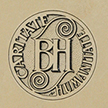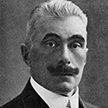The Law Books of the Realm of Sweden, 1666.
Sverikes Rikes Lagh Böker, Som äre, Landz Lagh, Stadz Lagh, Vplandz Lagh, Wästgötha Lagh, Östgötha Lagh, Södermanl., Wästmanna och Helsing Lagh; Såsom ock Kon. Mtz Placat, angående Justitiæ Sakerne, Rättegångz Ordinancie, Rättegångz Process och Domare Reguler; Nu på nytt medh nyttige Concordantier och Register förbättrat och vthgången.
The Law Books of the Realm of Sweden, Which are, State Law, Municipal Law, Law of Upland, Law of Västergötland, Law of Östergötland, Södermanland, Västmanland and Helsingland; Therewith Royal Proclamations on Legal Matters, Trial Ordinance, Trial Procedure, and Rules for Judges; Now issued anew and improved with useful Concordances and Index.
(Stockholm: Printed by Ignatium Meurer “medh egen bekostnadt”, i.e. at his own expense, 1666). Two volumes in folio, bound in contemporary full vellum.
This work contains the most important Swedish legal texts of the time, among them “Domare Reguler” (in modern Swedish “Domarregler”), Rules for Judges. Written c. 1520–1540, these general rules have formed the basis of the legal traditions of Sweden and Finland (which until 1809 was part of Sweden). The laws are still today included in legal codices, despite having never been enacted as binding law.
Provenance notes. The volumes were purchased by the UMN Law Library on June 6, 1949 for USD 50.72 from “Björck”, which is probably Björck & Börjesson. During the first half of the 20th century, this firm (founded in 1901) was Sweden’s leading antiquarian book dealer and third largest in the world, with branches in the US and other countries. – The “B H” ex-libris with the motto “Caritate Humanitate” (also known as a bookplate, which book collectors often paste into their books to identify their possessions), indicates prior ownership by Berndt Hasselrot (1862–1930), who among other things was Sweden’s Minister of Justice from 1914 to 1917. On the same page of the second volume, beside the ex-libris, is a handwritten mnemonic device for remembering the order of different laws. Among the more expected traces of former owners, we find also some dried plant leaves and traces of dried plants and a large leaf, reminding us that a book might be useful in many different ways.





